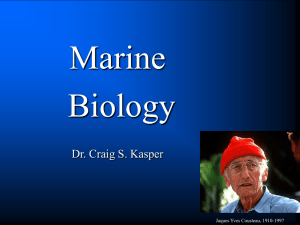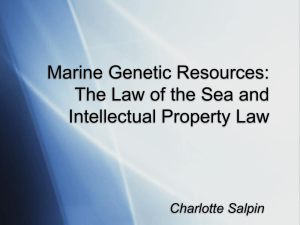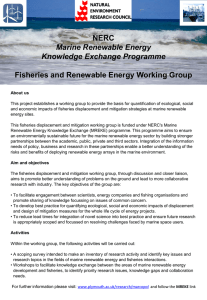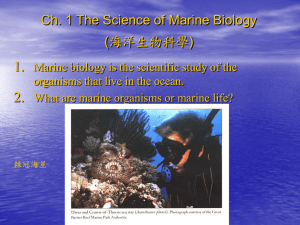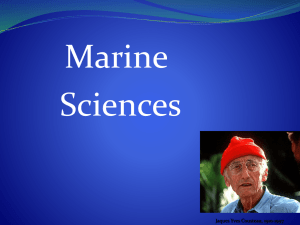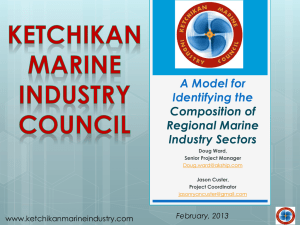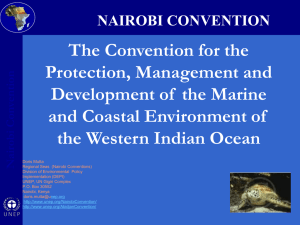PPTX
advertisement
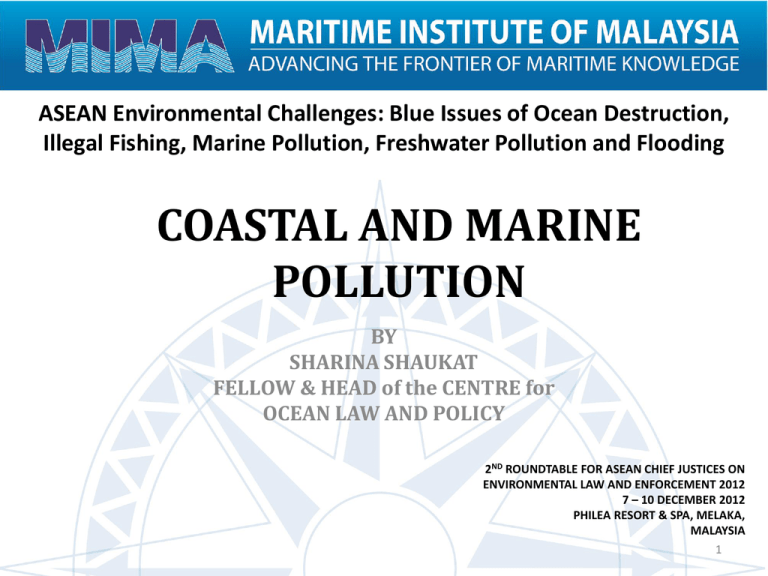
ASEAN Environmental Challenges: Blue Issues of Ocean Destruction, Illegal Fishing, Marine Pollution, Freshwater Pollution and Flooding COASTAL AND MARINE POLLUTION BY SHARINA SHAUKAT FELLOW & HEAD of the CENTRE for OCEAN LAW AND POLICY 2ND ROUNDTABLE FOR ASEAN CHIEF JUSTICES ON ENVIRONMENTAL LAW AND ENFORCEMENT 2012 7 – 10 DECEMBER 2012 PHILEA RESORT & SPA, MELAKA, MALAYSIA 1 1 Outline of Presentation • Introduction. • Protection of the marine environment in Malaysia – current and future challenges. • International Conventions and National Laws. • Measures in place for the reduction, control and prevention of marine environment protection. • Gaps in implementation. 2 2 Introduction • • • • Malaysian waters is characterised by: Narrow channels (Straits of Malacca); Continental shelf and shifting bottom topography; Tropical estuarine environments, rich in marine fauna and flora; • Limited mangroves, wetlands, sea grass, coral reefs; and • Marine natural resource-related activities such as fishing and coastal tourism. 3 3 • Malaysia’s coastline is approximately 4,675 km; the country is dependent on its marine environment for various uses ranging from fisheries, tourism and transportation. • Beyond these important economic resources, the coastal and marine environment is also a cultural identity in our country, and its coastal ecosystems such as coral reefs, mangroves and seagrasses has become an indispensable carbon stock and natural heritage in a world where coastal degradation is happening rampantly, whether due to natural or human causes. 4 • In 2009, 738 samples from 158 coastal monitoring stations throughout Malaysia were collected for analysis. • The most number of samples that exceeded Class II of the Marine Water Quality Criteria and Standards (MWQCS) were oil and grease (50.7%), followed by total suspended solids (47.2%) and Escherichia coli (45.7%). 5 • The Ocean Health Index evaluates the condition of marine ecosystems according to 10 human goals, representing the key ecological, social and economic benefits that a healthy ocean provides, in which Malaysia scored 55 out of 100. • This is in terms of maximum sustainable benefit achieved through methods that do not compromise the ocean’s ability to deliver that benefit in the future. 6 UNCLOS and marine environmental protection • Malaysia became a party to the United Nations Convention on the Law of the Sea 1982 on 14 October 1996. • Acts as a “framework convention” or an “umbrella convention” on ocean governance. • Many of its provisions, being of a general kind can be implemented only through specific operative regulations on other international agreements. 7 7 UNCLOS and marine environment protection • UNCLOS adopts a relatively comprehensive view of marine environment protection. • Incorporates provisions for the conservation of living and non-living resources within and outside national jurisdictions and prevention of marine pollution. • Key articles in Part V(EEZ), Part VII (High Seas) and Part XII (Marine Environment Protection). 8 8 Part XII • The essence of Part XII provisions is the call for States to take “Measures to prevent, reduce and control pollution of the marine environment”. • These are to be addressed individually or jointly to prevent marine pollution from all sources including vessels, land-based sources, dumping and installations on the sea-bed and the water column of the marine environment.9 9 • International and regional co-operation features prominently in Part XII which includes notification, contingency planning and research. • States are also required to closely monitor the effects of pollution on the marine environment. • In implementing Part XII, States are also required to establish national laws to prevent pollution from all sources. These laws include those to be enforced by flag States, port States and coastal States where vessel-based pollution is concerned. 10 10 • However, Part XII states that only monetary penalties could be imposed on vessels found polluting in areas beyond the territorial sea. • In territorial sea area, a “willful act of pollution” could be punished with monetary and other penalties. • Enforcement however, should not result in damage or loss to the vessels concerned as States may be held liable for loss and damage as a result of enforcement. 11 11 Other maritime conventions • After UNCLOS new instruments have been put in place at the global level to protect the marine environment. • These instruments include the Biodiversity Conventions on Climate Change, The Global Programme of Action for Land-Based Pollution and the Stockholm Convention on Persistent Organic Pollutants (POPs) 12 12 Status of Implementation of International Environmental Protection Treaties in Malaysia[i] Treaty Date of Ratification/ Accession Status of Implementation Convention on the Protection of Wetlands of International Importance especially for Waterfowl Habitat, 1971 (RAMSAR Convention) 20.12.1994 (a) Malaysia has gazetted a number of RAMSAR sites including mangroves and other wetlands Convention on the Protection of World Cultural and Natural Heritage, 1972 (World Heritage Convention) 7.12.1988 Terrestrial sites have been declared World Heritage Areas but no marine site yet. International Convention on the Trade in Endangered Species of World Flora and Fauna, 1973 (CITES Convention) 20.10.1977 National instrument of implementation is the Wildlife Protection Act, 1972. International Convention for the Prevention of Pollution from Ships, 1973 as amended by the Protocol of 1978 (MARPOL 73/78) 28.1.1997 (a) Merchant Shipping (Oil Pollution Act), 1994 United Nations Convention on the Law of the Sea (UNCLOS) 14.10.1996 Enabling legislation includes Exclusive Economic Act, 1984 and the Fisheries Act, 1985. Montreal Protocol on Substances that Deplete the Ozone Layer, 1987 (Montreal Protocol) 29.8.1989 Programmes to replace CFC-based substances are ongoing. Basel Convention on the Control of Transboundary Movement of Hazardous Wastes and Their Disposal, 1989 (Basel Convention) 8.10.1993 (a) Enabling legislation is the Environmental Quality Act, 1978. United Nations Framework Convention on Climate Change, 1992 (UNFCC) 13.7.1994 Ongoing programmes. United Nations Convention on Biological Diversity, 1982 (UNCBD) 24.6.1994 Enabling instruments include the National 13 Policy on 13 Biological Diversity, Wildlife Protection Act and Fisheries Act. National Laws • Malaysian Environmental Quality Act, 1974; • Merchant Shipping Ordinance, 1952; • Exclusive Economic Zone Act, 1984; • Fisheries Act, 1985; and • Merchant Shipping (Oil Pollution) Act, 1994 as amended 2005. 14 14 • Merchant Shipping (Amendment and Extension) Act 2011; • Malaysian Maritime Enforcement Agency Act 2004; and • Langkawi International Yacht Registry Act 2003. 15 Implementing Agencies • Department of Environment; • Malaysian Maritime Enforcement Agency (Coast Guards); • Marine Department Malaysia; • Royal Malaysian Navy; • Marine Police (Royal Malaysian Police) • Royal Malaysian Air Force; and • Department of Fisheries. 16 16 National Action • Conducting surveillance • Enforcing national laws • Preparing for disasters, particularly oil spills Eye in the Sky Fisheries Pollution Prevention Navigational Safety Security/Anti Crime 17 Preventing discharges from ships • Accidental discharges by reducing the possibility of ship encounters - measures taken such as: Routeing system to separate traffic flow between incoming and outgoing traffic such as traffic separation schemes (TSS) accommodated in the international regulations such as COLREG 1972 Surveillance and monitoring to ensure compliance with the routeing system such as the application of STRAITREP. 18 18 Prevention of intentional discharge from ships • MARPOL – Annex 1 Oil, Annex 2 HNS and Chemical, Annex 3 Packages, Annex 4 Sewage, Annex 5 Garbage, Annex 6 Air and the IMO is already working on CO2 emissions ( not a pollutant but which impacts on climate change). • MARPOL also has provision for reception facilities where ships Masters are not put in a position where they have to “intentionally discharge” to dispose of 19 their “waste”. 19 Awareness of coastal States legislation and procedures when transiting • Notice to Mariners/Marine Orders; • Information dissemination and exchange through the Marine Electronic Highway (MEH); and • VTIS – Vessel Traffic Information Services With the above measures and mechanisms in place, it will be almost impossible to plead ignorance for noncompliance. 20 20 Towards integrated management Common definition: “A spatial plan for regulating, managing and protecting the marine environment that addresses the multiple, cumulative and potentially conflicting uses of the sea” (Canning, 2003). Marine transportation Economic development Energy Environmental quality Marine protected areas Fisheries Aquaculture Military Marine Spatial Planning MSP has been the focus of considerable interest throughout the world, particularly in heavily used marine areas. 21 Gaps in Implementation • Malaysia has complied with most of the provisions of UNCLOS Part XII, International Maritime Organisation (IMO) conventions for the control and prevention of ship-based pollution and other global conventions for the prevention of marine pollution. However, gaps remain in the implementation. These are: • Need for comprehensive national programme; • Lack of regional instrument; • Lack of knowledge and information on the control of the introduction of exotic or alien species into Malaysian waters. 22 “…The problems of ocean space are closely interrelated and need to be considered as a whole…” Preamble to the United Nations Convention on the Law of Sea (UNCLOS), 1982 23 24 25 Thank you 26


